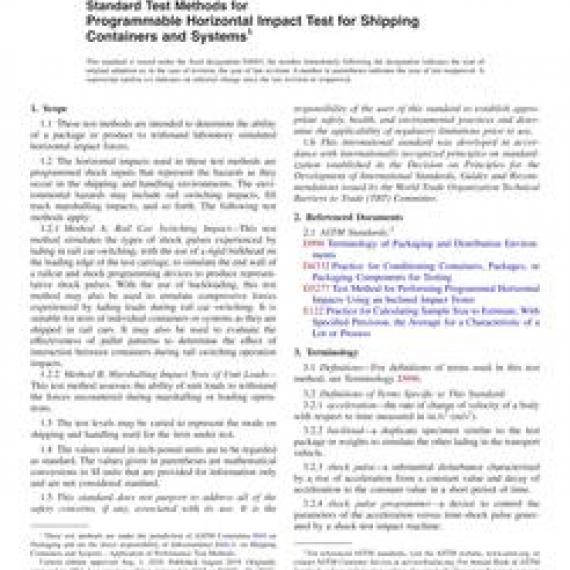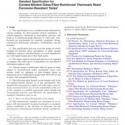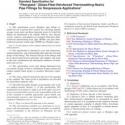No products
ASTM D4003-98(2019)e1
ASTM D4003-98(2019)e1 Standard Test Methods for Programmable Horizontal Impact Test for Shipping Containers and Systems
standard by ASTM International, 08/01/2019
Full Description
1.1These test methods are intended to determine the ability of a package or product to withstand laboratory simulated horizontal impact forces.
1.2The horizontal impacts used in these test methods are programmed shock inputs that represent the hazards as they occur in the shipping and handling environments. The environmental hazards may include rail switching impacts, lift truck marshalling impacts, and so forth. The following test methods apply:
1.2.1Method A, Rail Car Switching Impact-This test method simulates the types of shock pulses experienced by lading in rail car switching, with the use of a rigid bulkhead on the leading edge of the test carriage, to simulate the end wall of a railcar and shock programming devices to produce representative shock pulses. With the use of backloading, this test method may also be used to simulate compressive forces experienced by lading loads during rail car switching. It is suitable for tests of individual containers or systems as they are shipped in rail cars. It may also be used to evaluate the effectiveness of pallet patterns to determine the effect of interaction between containers during rail switching operation impacts.
1.2.2Method B, Marshalling Impact Tests of Unit Loads-This test method assesses the ability of unit loads to withstand the forces encountered during marshalling or loading operations.
1.3The test levels may be varied to represent the mode on shipping and handling used for the item under test.
1.4The values stated in inch-pound units are to be regarded as standard. The values given in parentheses are mathematical conversions to SI units that are provided for information only and are not considered standard.
1.5This standard does not purport to address all of the safety concerns, if any, associated with its use. It is the responsibility of the user of this standard to establish appropriate safety, health, and environmental practices and determine the applicability of regulatory limitations prior to use.
1.6This international standard was developed in accordance with internationally recognized principles on standardization established in the Decision on Principles for the Development of International Standards, Guides and Recommendations issued by the World Trade Organization Technical Barriers to Trade (TBT) Committee.


































